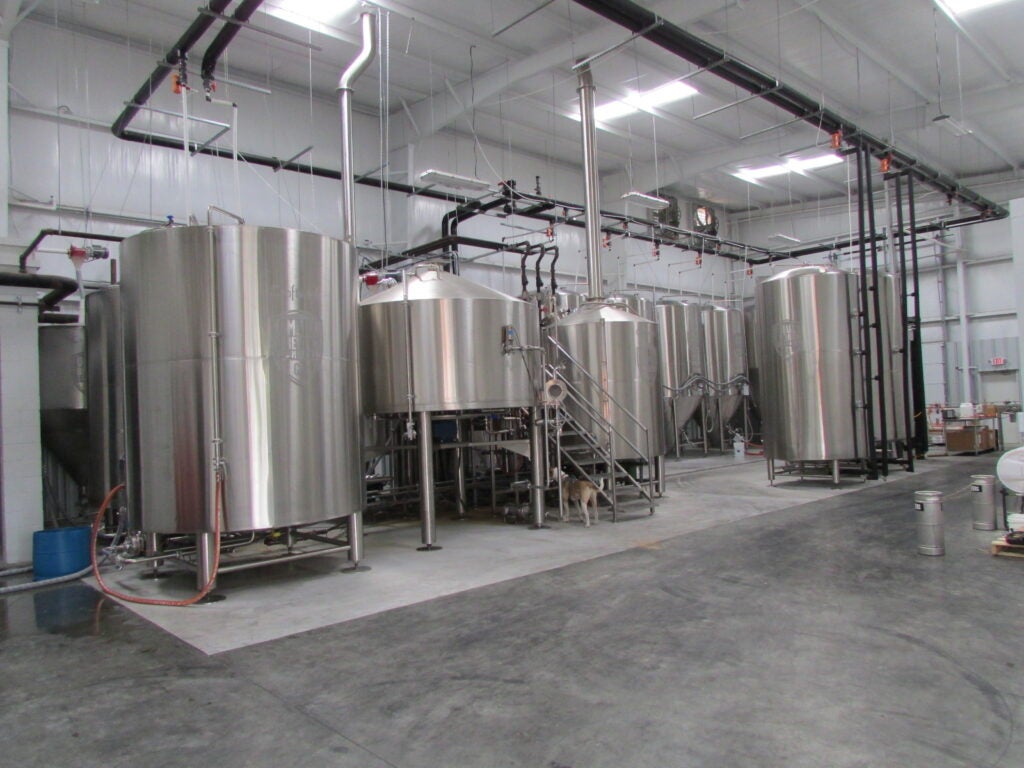The History of Some Liquid Treasures
Published 10:45 am Sunday, January 7, 2024
|
Getting your Trinity Audio player ready...
|
Not too long ago, this Southern gal got the urge to roam. So, she jumped into her Silverado and headed out to explore the lands of southwest Georgia, from the high, rolling hills which begin just north of Columbus, down to the farm lands where our piece of heaven is located. This was when I discovered a few things that I never thought were there: a craft brewery, a rum distillery and a family winery. All are in southwest Georgia. All out in the country and all within a day’s drive from our homes. Have I captured your interest? Yes!
Now, come and set a spell by me. Together, we will not only learn the history of alcoholic spirits in our state, we will also visit the modern-day answer to the oversized commercial companies. Grab yourself whatever you please. I guarantee that the history isn’t dull and neither are the places we will visit. Let’s begin with beer.
The first brewery in Georgia was on Jekyll Island. It was built by Major William Horton, a close friend of our state’s founder, General James Oglethorpe. In the mid-1700s, this brewery supplied ale to the soldiers and colonists at Fort Frederica.
We know that Georgia was established to be a buffer between the rice plantations in South Carolina, which King George of England envisioned as very important, and the Spanish which were wanting more land, not just Florida, and were advancing northward.
To get the folks from England to come over to this new territory, Oglethorpe asked King George to finance his project by offering a new type of experiment which could supply a solution to two serious problems, the overcrowding of England’s debtors’ prisons and the need that the King felt for creating a “no man’s land”. Oglethorpe felt sure that his vision would establish a colony on the banks of the Atlantic Ocean, giving this new territory access to valuable trade routes. Although King George didn’t seem to be all that worried about those folks who were starving in jail, he liked the idea of having an army of sorts between his precious rice plantations because he felt that the South Carolinians were not “equipped” to defend themselves from the Spanish. Therefore, he agreed to Oglethorpe’s idea of starting this unusual colony that would be called Georgia.
In spite of his good intentions, Oglethorpe had to change his lofty ideals as he faced the realities of dealing with the real human beings which now were to become King George’s defense against those he perceived as the enemy. The former debtors, who had now become the current landowners in Georgia, quickly had a problem with some of Oglethorpe’s restrictions, one was about religion and the other was the idea of no alcohol. They understood that they were to be free here and that they would be able to make their own laws. Oglethorpe ended up dropping his restrictions against certain religions and alcohol. To show he meant what he said, he gave his approval to a brewery on Jekyll Island, thus ending his earlier stipulation of no alcohol in this new colony.
Although the first person to brew alcohol in a large, commercial way, William Horton wasn’t the first to make home brew in Georgia. The Creek and Cherokee Indians as well as their ancestors, had been fermenting berries for thousands of years. They were the first to make a beer like concoction. When the first colonists arrived on the “Mayflower”, they also brewed an alcoholic drink, mostly at home when they could, from a combination of whatever they had on hand. Their ingredients included molasses, corn and persimmons. Home brewing was the way it was done because taverns and saloons were rare. Also, beer had to be kept cold making it difficult to store and transport, especially in the summer heat. However, the cold months also had their draw backs because the ingredients needed were out of season, so there wasn’t much to ferment. This was especially true for those who didn’t store syrup or fruit ahead of time.
However, when military and traveling routes were cleared out of the wilderness and they intersected with each other, small taverns and saloons were started in shacks at these intersections. Most offered mainly whiskey but some also had home brewed beer. Available along with the beverages, there was food, a place to sleep and perhaps the most important of all, news and company.
Georgia was the fourth state to ratify the Constitution and with statehood came more beer, more taverns and more breweries. This growth was stopped when the War Between the States grew and encompassed more and more territory, especially in the South. Another hindrance was the Northern blockades. They caused shortages on all types of food and this included what was needed to make home brew. Also, as the troops from both sides made their way across the land, they were like locusts, taking away much of what people had managed to keep so that they wouldn’t starve. This included alcohol.
After the War, saloons and taverns quickly became popular again, especially in the larger towns. Most served whiskey, beer or both. Often, they had free food like cheese, crackers, pretzels, or pickles setting on the bar. These were offered because they made the customers thirsty and they wanted more to drink.
Another impact to the home brewery came in the last half of the 19th century when many German immigrants arrived in Georgia. They brought with them the knowledge of brewing lager. By the final quarter of that century, beer was booming in Georgia. However, another development was in the wind, one that would eventually close down the many saloons, taverns, and breweries as well as those that distributed the beer. This was the Temperance Movement which, overall, lasted close to eighty years in Georgia. This forced folks to decide whether they were “wet or dry”.
On May 1, 1908, Georgia officially became a dry state. Not easily told what to do, this was a challenge to Georgians who now set out trying to figure ways around the law. Then, with the Volstead Act in 1920, all of the United States became dry because of the 18th Amendment to the Constitution. It didn’t prohibit the consumption of alcohol, just the making, selling and transporting of it. So, Georgians, like many other Americans, continued to skirt around the law in various ways. This ushered in the era of the moonshine runners.
Because of all of the violence and the growth of the Mafia, prohibition proved to be more evil than alcohol. All this came to an end when the 21st Amendment was adopted in 1933. Although Georgia didn’t ratify this amendment at this time, it did finally repeal its statewide prohibition in 1935. From the mid-1950s until the recent craft brewery’s revolution, no locally owned or operated breweries existed in Georgia.
However, things began to change in the early 1990s. Although the pioneer Georgia brewers had some tough going with limited available resources and the close scrutiny from legal authorities, a brewery in Atlanta survived. Encouraged, others began opening breweries. Now, these craft breweries provide more than five billion dollars a year in revenue for the state. Despite all of the legal restrictions that are on these craft beers, Georgia, as in every state and much of the rest of the world, has a growing group of folks who like these different types of beer. These new beers have wide and varied taste offerings, such as vanilla, chocolate, cinnamon, banana and other fruits. While it was just wines that used different ingredients to make a different taste, now beers did, too.
I think that the best way to introduce you to a craft brewery is to take you to visit one. This would be the Omaha Brewing Company owned by Dr. Robert E. Lee and his wife, Stephanie. Omaha is an almost invisible little town that seems to come out of nowhere because I drove by it three times, until, while stopped at the side of State Route 39, in the place where ONSTAR said it would be. I looked out of my window, down at the ground and there it was, the hand written sign that said: Welcome to Omaha, Georgia. I had heard that the brewery was in an old, remodeled schoolhouse, which was just down the road and after passing by thick oak and pine forests, there it was, hiding amongst the trees. While here, I was told the history of this brewery.
Known as “Doc” to his friends, Lee purchased this former 1940s schoolhouse, which had also been used as an industrial plant, with the idea being to start a winery. However, after looking into the market for wine, he found that there are many wineries in Georgia. But, the idea of a craft beer brewery seemed to be filled with immense possibilities for there were not that many, especially in Southern Georgia. Thus, the Lees decided to start a brewing company right there, in Omaha.
Aside from the fact that they felt this was the perfect place, there also is a personal family history here, whose roots have grown deep into the pinelands that surround the town of Omaha. This is where Lee grew up along with his four brothers and two sisters. He still has vivid memories of his grandmother’s house, especially the front porch, and the sharing of stories beneath the plentiful and huge live oaks.
Lee retains the ownership of much of his family’s land and grows most of the crops he needs to make his craft beers. As in other forms of farming, nothing is wasted and what is not needed for the brewery becomes feed for the cattle.
Lee remembers what it was like being a child in this tiny town in the hills of Georgia. It is his old stomping ground. He went to school in Omaha’s one room schoolhouse, where students from first through fifth grade would complete their lessons under the direction of one teacher.
Years back, Omaha was a town that flourished during the cotton boom but has since lost many of the residents to places where jobs are more plentiful. While not considered a good thing, this can be just that because when you are at the brewery, you feel the relaxed atmosphere of the Deep South. There is no hustle and bustle there, just down-home camaraderie.
Now, where the tasting room is, was once the original building that was the schoolhouse. It was renovated in the 1990s to manufacture miscellaneous items. When Lee bought the building in early 2013, he began his own renovations. In this 14,000 square foot structure, there is a tasting room where there is the most beautiful, handmade bar, that is made from local lumber by local craftsmen. Also, in this part of the brewery, there is a game room, a stage for country and blue grass music, and plenty of room for dancing. Just outside the giant garage doors there is a large, shaded patio for folks to enjoy the scenery of huge pines and green fields.
In true Southern fashion, the Lees approach friends as well as outsiders, with such warmth that everyone feels at home in their establishment. Like most Southern families, they “adopt” those that they feel very close to.
The Lees have expanded their brew house. Now they feel that with this equipment, they can start to shape their brand to be what they have wanted since the first day. After a lot of planning and construction, there is now state of the art brewing equipment in the new building.
In here, there is a 30-barrel brew house, 60 day and 120-day barrel fermenters which use glycol and steam piping. The glycol is food grade antifreeze and is used to control the temperature in the barrel fermenters. There also are brite tanks, which allow beer to be carbonated at the appropriate temperature and pressure, and a coolship for open fermentation. The brew house is run on a fully automated, touch screen, control panel. There is a barrel aging room and an original one-barrel brew house for the creation of signature beers especially for Lee, whose goal is to create a beverage that tastes and feels like a crisp, Southern Georgia morning. One thing that is common only to the Omaha Brewery, is that it benefits from using water provided by underground artisan springs and that only the locals know where they are.
There also is packaging equipment for the bottling and canning of the beers. The caning line makes it possible to significantly expand the distribution of the delivery of Omaha Brewery’s core brands like, “Hannahatchee Creek”, a beer with a refreshing, citrus tang; “Nada Banana”, a light-colored beer made in the German tradition; and “Gnat Knocked Lager” which smells like fresh sweet grain, to area stores. These beers are just a few of the many new tastes that are available here. Naturally, each beer is brewed in its own unique way and produces different shades of color as well as different textures and tastes.
The brewery attracts many guests, especially on the weekends. Therefore, in the Lee’s future plans, there is the expansion to having a camping and RV Park.






